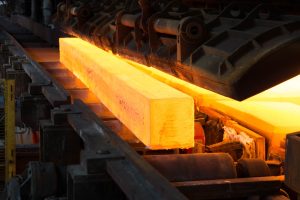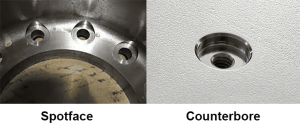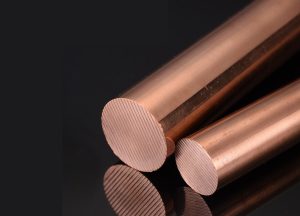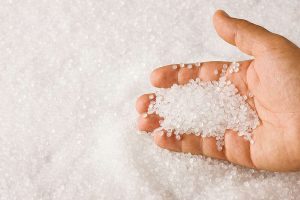3D printing and injection molding are different processes, but both take up valuable production space. We’ll take a closer look at them in this article.
The basics
3D printing and injection molding have a lot in common. Both are manufacturing processes that allow the designer’s vision to materialize, and both are perfect for prototypes or spare parts, among other things, but while they give the same result, they are very different processes.
First of all, 3D printing is an additive process. It creates objects by building them layer by layer. You can observe the build process on the fly, which is useful when testing a new project.
Injection molding uses molds. First, the reverse of the object is cut from a material that is safe to handle the molten building material (the material from which the finished object is made). The molten building material is then poured into the mold. After the material in the mold has cooled down, we have the finished item.
It is important to understand the differences between the two processes to determine which one is best for your needs.
Both 3D printing and injection molding begin with digital 3D design, and while we’re in the design phase, below are a few different things that are needed for these two processes.
Try Made by Aria Now
All information and uploads are secure and confidential.
3D printing:

3d printer: The obvious answer: You can find everything you need in a wide range of prices. It’s also worth noting that if you’re not ready to invest in your own machine, you can take advantage of 3D printing services. These services can be the perfect solution to test your initial idea if you are unsure if 3D printing will work for your business.
Filament / material: FDM 3D printers use spools of filament that are fed to the printer, melted and extruded onto the printer’s platform to form an object. There are many different filaments that exhibit a variety of properties, ranging from entry-level thermoplastics to wood-blended filaments and more difficult-to-machine metals.
Injection molding

Injection molding machine: Injection molding requires a special machine that includes a material hopper, an injection ram (or some type of piston) and a heating device. These machines are designed to keep the molds in place while filling, ensuring a successful production process.
Forms designed for your facility. It is an expensive injection molding tool that must be properly crafted to produce the desired result. Unfortunately, it is much easier to make a mistake here than to fix it. Molds are expensive to create, so many manufacturers produce molds on a large scale. They are usually made of hardened steel, aluminum or a copper alloy to withstand the heat of the injection process.
The material for the final item: Like 3D printing filaments, a wide variety of injection molding materials is available. Metal alloys and plastic polymers are popular for both machine parts and other items. Again, the specific material you need depends on what you are doing.
Pros and cons of 3D printing
3D printing is a great starting point for production, especially if you want to print small amounts of complex designs. Here’s what you need to know about 3D printing to be able to decide if it will be the right process for your projects:
Pros
- Low cost of entry
You can spend as much money as you want on 3D printing. A desktop 3D printer and filament stock is a much lower cost than buying a molding machine and making a mold, and the continual proliferation of open source software and hardware in the 3D printer user community provides a great support network.
- Easy to make changes
Due to its additive nature, you can detect and fix design problems while creating the model. This avoids wasting a whole range of materials on objects that have the same disadvantage. 3D printers allow you to pause the process in half and continue in the same place, which is perfect for spot adjustments that would otherwise make you start all over again.
- Easy handling of complex projects
The 3D printing process of adding layers on top of each other makes it ideal for creating geometrically complex objects.
Cons
- Limitations in the number of printed elements
One of the drawbacks of the 3D printing process is that it severely limits the number of objects that can be printed simultaneously. The vast majority of 3D printers will only produce one or two models at a time – even machines with more than one extruder.
- Limited build volume
Production on 3D printers is also limited by the size of their printing area. Large-scale 3D printing is possible, but even that is relatively small compared to what can be achieved by injection molding.
- Rough surface of the workpiece
FDM 3D printing layers are small and close to each other – but still noticeable. This creates a ridged surface on the finished objects, no matter how well-positioned the layer details are. This is a problem if you want to craft items that will run over other items, such as machine parts that should be aligned. You will probably need to take an additional step of smoothing the printouts.
Try Made by Aria Now
All information and uploads are secure and confidential.
Pros and cons of Injection molding
Pros
- High simultaneous performance
Injection molding is designed to use a large number of molds simultaneously. Producing a series of tens, hundreds or even thousands of molded items is the norm. This is ideal if you are ready to mass-produce your project.
Increased object durability. Injection molded items consist of a single cast layer which adds strength to the shape as it has no cracks or weakening points. In addition, injection molding can handle pure variations of dense materials such as concrete that need to be thinned or otherwise modified to make 3D printing materials.
The minimum amount of scrap produced. As injection molding pours material to match the molds, it uses exactly as much as needed for each project. This makes it a very effective way to mass-produce items without worrying about waste.
Cons
- Design limitations
Constructing a form limits the geometry of designs in several key ways. First, right angles are not recommended because they make it difficult to pull out a hardened object without risk of breakage. Slanted angles make it easier to extend the edge with less competitive pressure. Second, injection molding is simply not suitable for the delicate areas of a design. Mold making – design inversion – is not as precise as additive manufacturing.
- Difficult to correct mistakes
Discovering and fixing any bugs found in the injection molding process will cost you time, money and a lot of nerves. If an object turns out to be incorrect, it means that the mold will have to be completely reworked and it is likely that you will have to rework an entire batch of objects as well.
- High cost of entry
The injection molding machines themselves are more than a six-digit purchase price – they are intended for industrial use, not for hobby use. It does not include the costs of making molds, obtaining materials and prototyping all designs before going into production.
So what did we learn about the differences between 3D printing and injection molding? Basically, these are two different ways to approach the same basic task – creating 3D objects. However, due to their different strengths and weaknesses, their use cases are different.
3D printing is best for:
- Limited number of objects. This includes objects such as prototypes or small series production, among others.
- Projects with multiple openings. 3D printing is ideal for elements that branch out or have numerous holes.
- Design changes. 3D printing allows you to adjust the design to our needs, so it will be the right choice if you are not sure whether your project is already at its optimal stage.
Injection molding is best for:
- Large batches of ready-made items. If you want to create many identical objects at the same time, injection molding is for you.
- Solid projects. The one-step injection molding process turns the model into a continuous mold which adds strength to the finished part.
- Objects that will move relative to each other. There is no need to add an extra finishing step to make sure the injection-molded items are smooth enough to reduce friction against moving parts – making it a particularly suitable process for applications where the parts engage with each other.
3D printing and injection molding are great ways to materialize your ideas. It is enough to choose the right one for your needs or use both, if required by the specifics of your business.
The ability to produce heavy duty, free-form parts makes injection molding used in numerous industries. For example, in medicine and pharmaceuticals, entrepreneurs use injection molding machines to produce droppers, syringes, diagnostic test kits, parts of stethoscopes or other research instruments.
In turn, telecommunications companies use plastic fasteners and adapters when installing wires. The food sector uses the method in the production of machine parts that come into contact with food, as well as containers and caps.
The injection molding machines also manufacture parts for toys for children, components for household appliances, electronic devices and cars. Construction companies also use molding – both in the production of accessories and tools needed at construction sites.
Try Made by Aria Now
All information and uploads are secure and confidential.
Molds for casting and plastic products
Injection molding steps
Conventional injection molding, material selection, microforming injection molding machines”, the machine is operated in 6 phases. In the first, the mold closes, which usually consists of 2 elements – one attached to the device and the other, movable. In the next stage, the plastic material is injected into the mold, and in the third – the pressing phase – the material is replenished.
Then, in the plasticization stage, the piston or the screw moves away, which causes the granulation to be picked up and plasticized under the influence of high temperatures. During the opening phase, the mold halves open and the product, i.e. the molded part, falls out. The last part of the injection molding machine’s work is the downtime between successive cycles.
Injection molding and 3D printing
In terms of manufacturing costs, injection molding has a high initial cost for mold preparation and the necessary tooling. These expenditures do not appear in the case of 3D printing, however, to evaluate the profitability of the methods, the cost of the products must also be taken into account – the price of a single element produced incrementally will be many times higher than the injection-molded parts.
Therefore, when calculating profitability, it is necessary to take into account the total number of items produced. In a situation where the time of order execution is the key factor, 3D printing gains an advantage, because after the design is developed, production can begin. On the other hand, it is worth remembering that even low-volume printing of large elements may take more time than preparing the mold.
When it comes to the strength of the products, specialists from 3D Space, a company dealing with 3D printing, point out that during injection molding there is no risk of separation of individual layers – the elements are fixed and therefore more durable. Besides, the method makes it possible to use any thermoplastic or polymer as a raw material.
More possibilities in injection molding are also related to the color of the products – due to the application of the dye to the raw material, there is no risk of showing the original color of the material.
Plastic injection molding market
The analytical company Markets and Markets estimated the value of the injection molding market at $ 8.9 billion in 2020 and forecasts growth in 2025 to $ 10.6 billion. Demand increased during the COVID-19 pandemic as the demand for medical equipment increased.
Fully electric injection molding machines are becoming more and more popular, as they are more efficient and cheaper in operation and maintenance than hydraulic machines – according to calculations they save 50-70% of energy. According to analysts, the barrier to development is the high prices of all-electric devices.
There is also an increasing demand for injection molding machines for plastics, which form large components for the automotive industry or household goods.
Try Made by Aria Now
All information and uploads are secure and confidential.
Categories
Share On
Recent Post

Everything You Need To Know About Annealing Processes
The chemical composition and internal structure of a material are

Spotface vs Counterbore, What is difference?
As a professional engineer of more than eight years of

What is Copper? Explaining Copper Alloys & Properties
Copper is a reddish-brown metal with high electrical conductivity, high

How to Define Cosmetic Quality Standards for Plastic Parts
In electronic manufacturing plants, products undergo quality inspection (QC) before

Polypropylene (PP): Understand the Advantages and Applications
Polypropylene or polypropylene is a thermoplastic material that is used

Everything You Need To Know About Annealing Processes
The chemical composition and internal structure of a material are

Spotface vs Counterbore, What is difference?
As a professional engineer of more than eight years of



